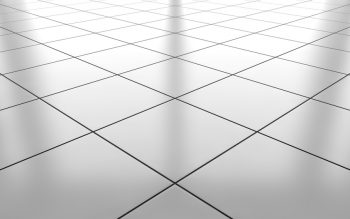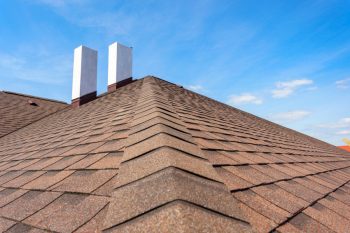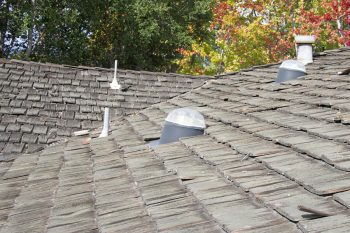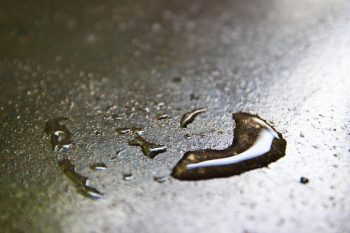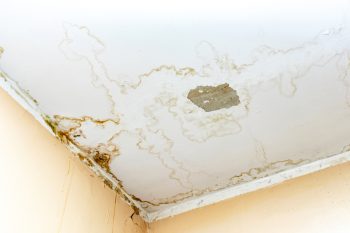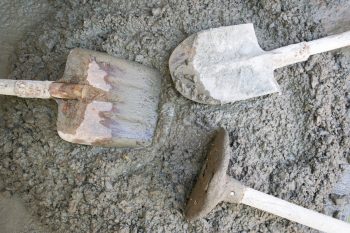
Are you repainting your cabinets or undergoing a major renovation project? Choosing a new wallpaper or paint color can be daunting. You can either stick to traditional colors or try a more creative and unconventional design.
Whatever you choose, it is essential to know that your project is not complete without new kitchen hardware.
The problem is that installing cabinet knobs is a pain. Drilling holes into wooden cabinets is wasteful and unnecessary, especially if you’ve spent tons on that hardwood cabinet.
Not to mention that getting the measurements right needs a certain amount of skill and correct tools. But don’t worry because we’re here to tell you everything you need to know about installing cabinet knobs without drilling holes!
Before painting your cabinet, ensure you’ve removed the hardware so you don’t miss a spot. If there’s an existing hole, you can use a wood filler to cover it up.
Once all these are done, you are ready to reinstall your kitchen hardware. Here are several ways to install cabinet knobs without drilling holes:
- Using a double-sided adhesive tape
- Using super glue
- Using two-part epoxy
This article discusses several ways to install cabinet knobs without drilling, their pros and cons, and how to cover up a hole with a wood filler.
Simple Ways To Install Cabinet Knobs Without Drilling

Refurbishing your kitchen cabinets can be a huge task, especially if you’re doing it yourself. However, it’s not impossible.
If you have a beautiful hardwood cabinet made from oak or mahogany, pick a high-quality varnish to remove dullness and enhance its appearance.
Additionally, choose matching designs for cabinet knobs, pulls, latches, and faucets. Here are four ways to install cabinet knobs without drilling.
Using a Double-Sided Adhesive Tape
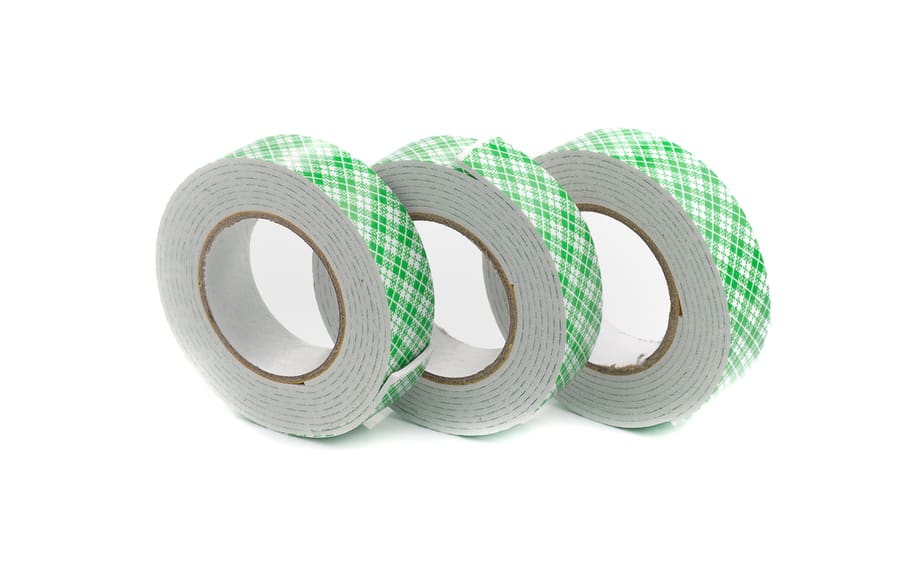
Consider the size and shape if you install knobs to your cabinet using adhesive tape. Don’t choose knobs with metal prongs. Choose a knob with a flat, large base that adhesive tapes can fully hold.
Step-by-step instructions on how to install cabinet knobs using double-sided adhesive tape:
- Pick heavy-duty double-sided adhesive tape for walls.
- Use a measurement tool to mark the area where the knobs will be installed.
- Trace and cut the adhesive tape to fit the flat base of the knob.
- Peel the paper back and slowly place it on the marked area where you intend to install the knob.
- Peel the other side of the adhesive tape and thoroughly press your knob to it.
Pros and Cons of Using Tape To Install Cabinet Knobs
Pros: Using adhesive tape to install cabinet knobs is easy and simple. A great quality adhesive is durable and requires low maintenance.
Cons: Removing heavy-duty adhesive from painted wood can ruin the paint. Ensure that you do not make mistakes in pressing the knob into place.
Will Double-Sided Adhesive Tape Work On:
- Wood — Yes
- Metal — Yes
- Aluminum — Yes
- Ceramic — Yes
- Plastic — Yes
- Glass — Yes
Using Super Glue
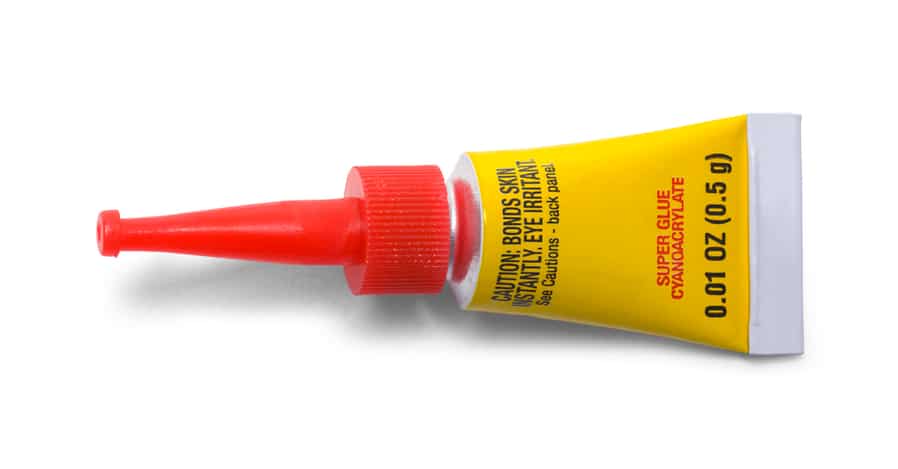
Superglue, instant adhesives, or Krazy Glues are adhesives made from Cyanoacrylates that instantly bond with wood, metal, or aluminum. Because of their fast cure time, trying to position hardware is tricky.
You must ensure that the measurements are right because even small mistakes will be greatly noticeable. Therefore, before installing any hardware, be sure of its positioning.
Some superglue may not be able to hold the weight of heavy metal knobs right away. In these cases, you need to support the knob and let the glue completely dry before letting go.
Step-by-step instructions on how to install cabinet knobs using super glue:
- Use a measurement tool to mark the area where the knobs will be installed.
- Spread the glue at the flat base of the knob.
- Position the knob on the cabinet, and press it.
- Wait for a few minutes and let the glue dry.
Pros and Cons of Using Glue To Install Cabinet Knobs
Pros: Gluing is easy and does not require special tools.
Cons: Sources show that superglue does not work on plastics and other polyester materials.
Will Superglue Work On:
- Wood — Yes, you can use super glue or wood glue.
- Metal — Yes, a superglue based on Cyanoacrylates works on metal.
- Aluminum — Yes, aluminum worked well with Cyanoacrylates glues.
- Ceramic — Yes
- Plastic — Super glue does not work in certain types of plastic, such as polypropylene and polyethylene plastics.
- Glass — Yes, but the bond is not waterproof.
Using Two-Part Epoxy
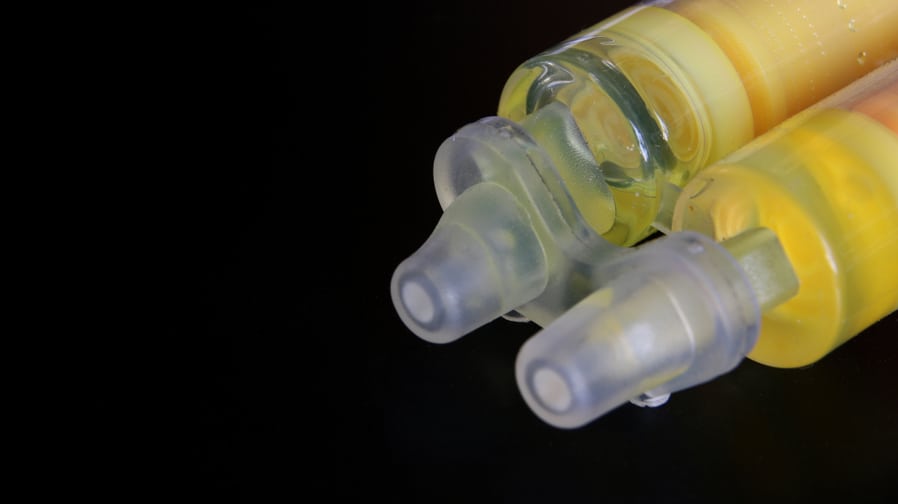
A two-part epoxy is a strong, permanent, and gap-filling adhesive. Epoxy will dry within a few minutes, and some variations produce clear adhesive. It is made of two parts: epoxy resin and hardener.
Step-by-step instructions on how to install cabinet knobs using two-part epoxy:
- Use a measurement tool to mark the area where the knobs will be installed.
- Dispense even amounts of resin and hardener onto a disposable flat surface.
- Mix for at least 30 seconds until the texture is consistent.
- Apply to the desired location within 5 minutes.
- Position the knob to the marked area and hold it down. Please do not touch it for 30 minutes to allow the epoxy to dry.
Pros and Cons of Using Epoxy To Install Cabinet Knobs
Pros: Epoxy is a heavier-duty adhesive and is more permanent than tape or glue. Your measurements should be precise to avoid mistakes. It can also hold different materials together.
Cons: You must be quick to install the knobs before the epoxy dries, which means you only have less than 5 minutes to accomplish the installation.
Will Epoxy Resin Work On:
- Wood — Yes
- Metal — Yes
- Aluminum — Yes
- Ceramic — Yes
- Plastic — Yes
- Glass — Yes
- Automotive — Yes
How To Fill and Cover a Wooden Cabinet Hole
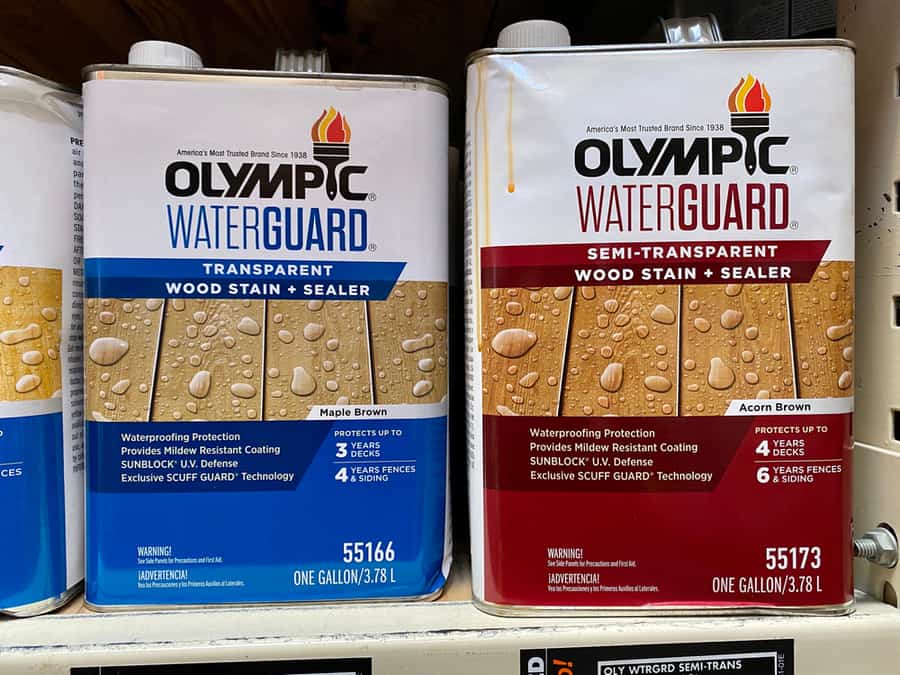
When wood cabinets are not treated properly, they may rot or decay. Whether you are using hardwood or softwood, it’s still best to treat it. The simplest way is applying a wood sealer or varnish.
The wood sealer will protect the wood from moisture, while the varnish will give it an elegant finish.
What if your cabinet has holes in it? Can you still cover it up? Yes, you can!
Are you installing new cabinet knobs but have an existing hole in your cabinet door? There’s still hope for you! And you can do it yourself! Here are two ways to fill and cover it:
- Fill old cabinet hardware holes by using epoxy resin. Epoxy resin is durable and great for outdoor cabinets.
- You can also use wood filler, which is used to replace decayed wood and hide flaws in wooden cabinets before painting them.
Summary
- Double-sided adhesive tapes are easy to use when installing cabinet knobs. However, you need heavy-duty tape and knobs with flat bases.
- Using super glue for installation works well with wooden cabinets and knobs. It may not work with materials incompatible with superglue, such as plastic and polyester.
- Epoxy resin works well with aluminum, wood, ceramic, automotive, glass, steel, and plastics.
- Epoxy resin can also fill holes in your cabinet.
- Wood fillers can fill cracks and gaps in rotten wood cabinets.
Frequently Asked Questions
Can You Superglue Cabinet Handle?
You can use superglue to install ceramic, aluminum, or metal cabinet hardware. Wood glue should be used for wooden cabinet knobs. Unfortunately, superglue will not work on plastic and polyester materials.
What Is the Best Glue To Use on Kitchen Cabinets?
PVA glue is one of the most popular crafting glue in the market because porous materials can easily absorb it. They are great to use in wood works, such as kitchen cabinets because they do not have toxic smells.
Do Cabinets Come Pre-Drilled for Hardware?
Many cabinets do not come pre-drilled because some prefer not to drill holes. However, it is advisable to install knobs and pulls. Over time, unclean hands may stain cabinet doors and drawers.
How Do You Measure Cabinet Hardware?
A cabinet hardware jig is the easiest way to accurately measure cabinet hardware. They can help you with precision, and they are compatible with almost any cabinet door and drawer front. However, you can use a tape measure or meter tape if you don’t have this equipment.
